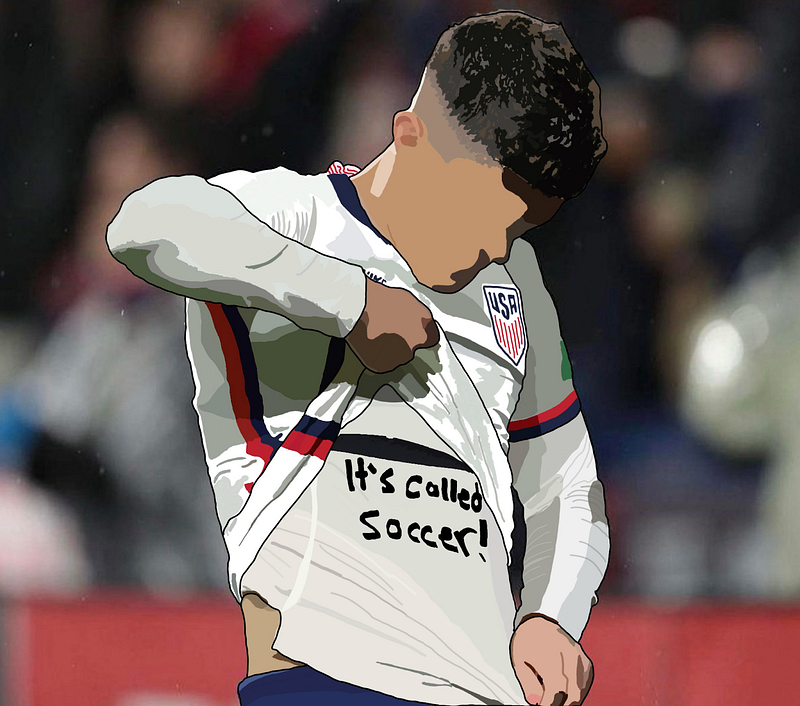
Next week, the Major League Soccer (MLS) Cup Playoffs will commence with 16 teams contending for the league title. Two names absent from the marquee will be Argentine Lionel Messi and his club Inter Miami. Messi made his debut for the club in July and despite a Leagues Cup victory, was unable to lift Miami high enough in the standings after being sidelined with an injury through the end of the season.
Messi’s legacy is already secured with his stint in the MLS a glorified retirement. That being said, his arrival was supposed to be something of a watershed moment for American soccer. As more players head to leagues abroad and with the 2026 World Cup just around the corner it raises this question: where is American soccer right now and where is it going?
First off, how does American soccer differ from leagues abroad? Unlike leagues in Europe where clubs operate independently, the MLS uses a franchise system similar to other American leagues. Under this system, the league operates a single entity. Owners are shareholders of the league as a whole, enabling them to make rules to restrict spending and free agency. Teams operate with a strict salary cap, cannot be relegated and hold the right to trade players without their consent. This is why the MLS, despite playing in a wealthy country, still sits miles behind leagues abroad. Teams can’t spend hundreds of millions on wages and transfer fees in the same way superclubs in Europe or Saudi Arabia can. Why is the MLS like this?
Because American soccer failed. Over and over again for decades. Leagues were founded, failed to attract audiences drawn to other sports, and collapsed. The closest contender was the North American Soccer League. In 1975, the NASL’s New York Cosmos signed 35 year old sporting icon Pele to the largest contract in American sports. Other post-prime superstars such as Johan Cruyff, Franz Beckenbauer and Bobby Moore later joined the league. Pele played three seasons before hanging up his boots for a final time. Why didn’t the NASL stick around?
Because a league can’t survive off a single player. In matches without the big stars, attendance cratered. The NASL was a circus with Pele as its main attraction. When he left, the fans followed, and the league folded in March 1985. This is why the MLS is the way it is. Its mission from Day One has been to keep costs down. When it began in 1993 as part of the US’s bid for the 1994 World Cup, the league was barely professional, played on repurposed NFL and College football fields. The league lost money for years. In 2007, David Beckham signed with the LA Galaxy on the condition that he could buy into the league. Beckham now owns Inter Miami with Messi set to take a share of ownership upon his retirement. Beckham brought his global status and with lower player costs, the league survived and grew from 10 teams in 1996 to 30 in 2025. It’s a great story but that focus on cost cutting hasn’t been without consequences.
Teams have to compromise. The MLS saves money by flying teams commercially rather than on private planes. This results in less rest time for players as they have to contend with regular flight schedules and connecting flights. Additionally, games are often played on turf. Turf is cheaper to maintain and can easily be removed, enabling arenas to host concerts and other events. However, it also raises the risk of non-contact injuries due to the lack of grip when planting the foot, especially when performing high-speed movements. Teams also have smaller roster sizes. The English Premier League allows teams 25 players and then an unlimited number of under 21 players. The MLS has a hard cap of 30. Again, this saves costs by limiting payroll but it comes at the cost of wear and tear on player health. The MLS plays a 34 game season with international matches and cup games interspersed throughout followed by a traditional North American playoff format. More matches means more money but its another anchor weighing down the quality of the league. Part of the reason Inter Miami is absent from the playoffs is due to a hamstring injury Messi sustained in a game against Toronto FC shortly after returning from international duties.
Again, the MLS is run by its owners, so any changes have to go through them instead of an independent body as is done in other leagues. As such, changes that would threaten their bottom line have no chance to become reality. Promotion/relegation would boost the excitement of late season matches but no owner is going to vote to devalue their asset after one bad year. Having teams pay transfer fees directly for players would make the MLS a real player for international talent, but it too would lose the owners money. American soccer can’t continue to have this survivalist complex. If the MLS is going to succeed it can’t be afraid to fail.
















